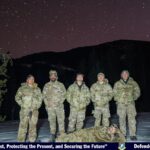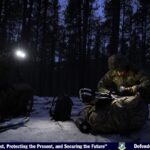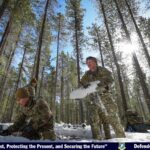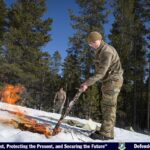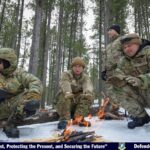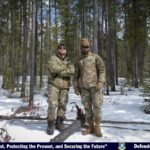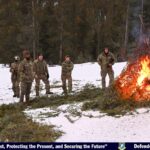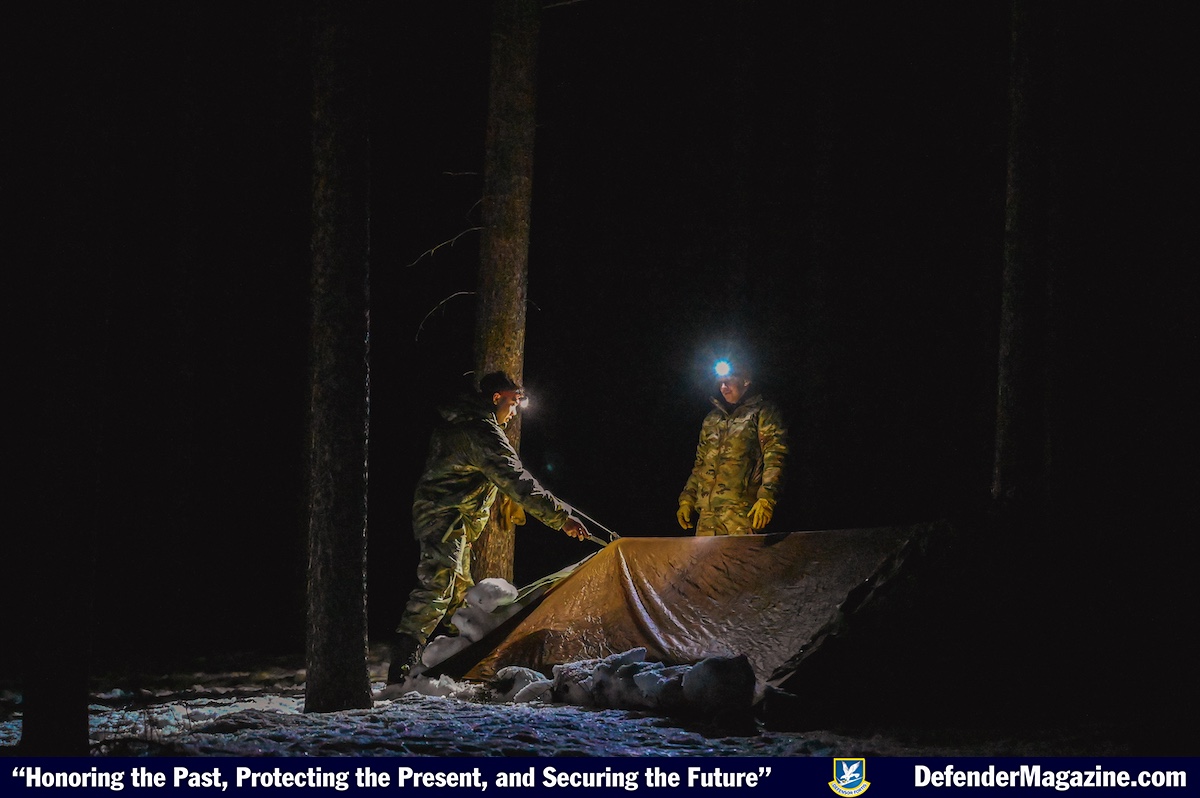
The course, led by Staff Sgt. Tanner Huisman, a survival, evasion, resistance and escape specialist from the 582nd Operations Support Squadron Detachment 4, was coordinated by Capt. Michaela Mulokey, 341st Missile Security Forces Squadron operations officer.
Mulokey initiated the collaboration with Huisman to create the course as an innovative solution to continue providing critical survival skills to Montana-based Airmen after funding for the previous training program, which allowed 341 MSFS members to attend the Air Force’s Arctic Survival School in Alaska, was cut.
“As a leader, part of setting your people up for success is imagining the worst-case scenario and giving them the tools to get through it,” Mulokey said of her intention behind bringing the localized training to Malmstrom. “Montana has some pretty extreme weather conditions, so if for whatever reason security forces specifically were to be out guarding a site and get stranded for an extended period of time, I am comforted by this course to know that they would be able to increase their chances of survival.”
The curriculum was adapted from the Air Force’s Arctic Survival School, but tailored to meet the unique needs of Malmstrom’s personnel. The course, which Mulokey is working to implement as a permanent fixture, will primarily benefit security forces Airmen but is also designed to include other career fields who may be interested in developing their survival skills.
Over the course of the three-day field training, participants learned how to use available natural resources to build shelters, make fire in dry and wet conditions, filter and purify water, set snare traps for hunting small game and create ground-to-air smoke signals. They also used materials such as spruce, fir, pine and aspen trees to construct shelters designed to protect them from the elements.
“For many of us, this was our first experience camping or even starting a fire,” said Airman 1st Class Zeke Rodriguez, 341 MSFS missile security operator and Chicago native. “When we first got out here I was like, ‘Why did I sign myself up for this?’ But at the end I felt proud because I challenged myself by being in an uncomfortable situation that taught me new things and introduced me to new people.”
The training, held in the remote wilderness within the Little Belt Mountains, tested the Airmen’s endurance in sub-freezing temperatures as low as 15 degrees Farenheit, with wind gusts reaching up to 20 mph. The winter weather provided the perfect environment to put issued equipment to the test and emphasized the importance of teamwork and leadership in overcoming difficult conditions.
Throughout their field training, participants also had to ration their provisions. Each Airman was issued a single Meal-Ready-to-Eat and a can of SpaghettiOs, which limited their daily average intake to 600 to 800 calories. In a survival situation, the recommended daily intake is 4,000 calories.
Though their bodies were fueled by little more than the bare essentials, their determination to complete the course burned as hot as the fire they worked so hard to start on day one of training.
“I was humbled by stuff like our shelters and small meals in comparison to the luxuries at home we take advantage of every day,” said 2nd Lt. Martin Montanez, 341st Communications Squadron cyber warfare officer and New York native. “It’s such a feeling of accomplishment just knowing I was able to build something. Now I feel prepared and can share my experience with other Airmen.”
The training was concluded just as the sun rose on the morning of day three after the participants ignited a 7-foot-tall pyre they constructed using green tree boughs, which emitted a massive ground-to-air smoke signal and simulated their successful rescue.
The success of this inaugural session is expected to lead to more frequent winter survival courses for Malmstrom Airmen, providing them with the crucial skills needed for any future missions or emergencies in the harsh Montana wilderness.
- Published
- 341st Missile Wing Public Affairs

